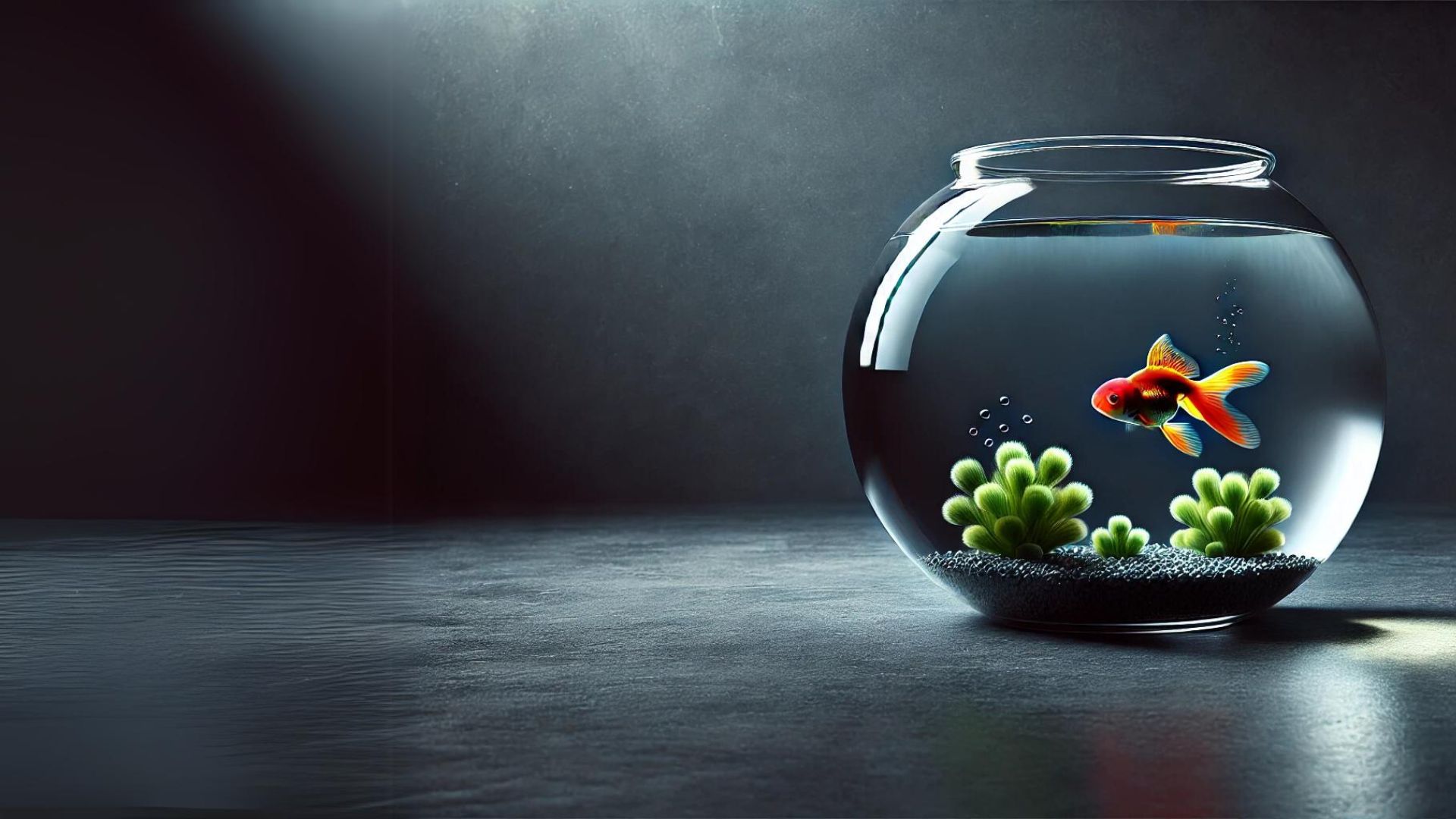When envisioning a pet fish, many people picture a large, vibrant aquarium filled with swimming beauties. However, not everyone has the space, time, or resources for a full-sized tank.
Fishbowls often come to mind as a simpler alternative. While the charm of a fishbowl is undeniable, it’s essential to approach bowl-keeping responsibly to ensure the well-being of your aquatic friends.
Disclaimer: While some fish can survive in bowls, aquariums are generally recommended for providing a healthier and more stable environment. Always research and consider the specific needs of your chosen species before setting up any aquatic habitat.
Below, we explore suitable fish species that can thrive in bowls with minimal maintenance, while also highlighting the considerations necessary for their care.
Why choose a fish bowl?
Benefits of Fishbowls
- Easy Setup – Fishbowls require minimal initial setup compared to larger aquariums.
- Low Start-Up Cost – They are generally less expensive, making them accessible for beginners.
- Space-Saving – Perfect for small living spaces like desks, countertops, or dorm rooms.
Limitations of Fishbowls
- Limited Space – Fishbowls offer restricted swimming areas, which can impact fish health and behavior.
- Water Quality Challenges – Smaller volumes of water can lead to rapid changes in water quality.
- Temperature Fluctuations – Maintaining a stable temperature is more challenging without proper equipment.
Despite these limitations, certain fish species can adapt reasonably well to bowl environments when provided with attentive care.
Top Fish for Bowls with Minimal Maintenance
Betta Fish (Siamese Fighting Fish)
Betta fish are among the most popular choices for bowls due to their vibrant colors and elaborate fins. They are solitary creatures, which means they don’t require tank mates, reducing the complexity of their care.

Pros
Cons
Care Tips
White Cloud Mountain Minnows
These small, hardy fish are excellent for beginners. They are active swimmers with striking horizontal stripes, making them an attractive addition to any bowl.
Pros
Cons
Care Tips
Endler’s Livebearers
Similar to guppies, Endler’s Livebearers are small, colorful, and active fish. They are less common but equally captivating, making them a unique choice for bowl enthusiasts.
Pros
Cons
Care Tips
Snails (Optional Addition)
While not fish, certain snail species like Mystery Snails or Nerite Snails can coexist with bowl-dwelling fish, aiding in cleaning algae and detritus.
Pros
Cons
Care Tips
Essential Care Tips for Bowl Keeping
Regular Water Changes
Perform partial water changes (25-50%) weekly to maintain water quality. Use dechlorinated water to avoid harmful chemicals.
Maintain Stable Temperature
Use a small aquarium heater for tropical fish like Bettas. Monitor water temperature with a reliable thermometer.
Feeding
Feed small amounts once or twice daily to prevent overfeeding. Remove any uneaten food to reduce waste and prevent water contamination.
Avoid Overcrowding
Even in a bowl, it’s essential not to overcrowd, as this can lead to stress and poor water quality. Research the specific needs of each species regarding space and companionship.
Monitor Health
Regularly observe your fish for signs of stress or disease, such as faded colors, lethargy, or unusual behavior. Address any health issues promptly to ensure longevity.
Alternatives to Traditional Bowls
While bowls can be a starting point, consider upgrading to a small aquarium with proper filtration and heating. Nano tanks, typically ranging from 5 to 10 gallons, offer a more stable environment for fish, reducing maintenance efforts and enhancing fish health and happiness.
Conclusion
Keeping fish in a bowl with minimal maintenance is possible with the right choices and care strategies. By selecting hardy, small species like Betta fish, White Cloud Mountain Minnows, and Endler’s Livebearers, and adhering to essential maintenance practices, you can enjoy the beauty and tranquility of aquatic life in a compact setting.
However, always prioritize the well-being of your pets by providing an environment that meets their needs, and consider upgrading to a more suitable tank if possible to ensure a longer, healthier life for your fish.
Disclaimer: While some fish can survive in bowls, aquariums are generally recommended for providing a healthier and more stable environment. Always research and consider the specific needs of your chosen species before setting up any aquatic habitat.




